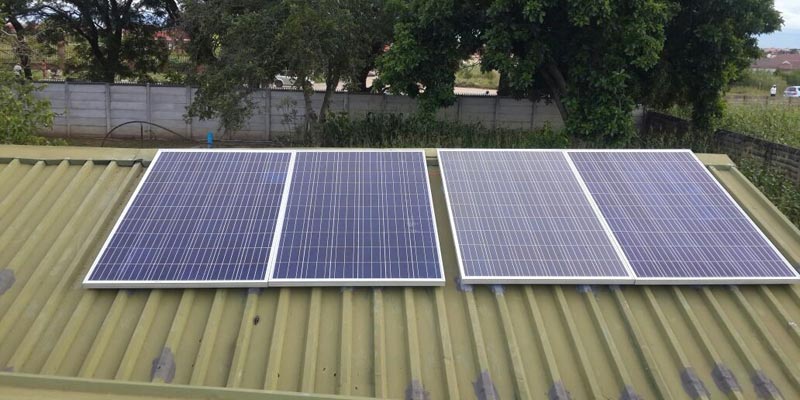We have looked at the basics of power consumption and energy management.
Once you have achieved near perfect energy management through either physical means or by changing to energy efficient equipment, you are ready to GO SOLAR
A lot of articles have been written about the components that form the solar powered electric system, view some of those HERE. I would like to focus a little more on each component and define each a little closer, and how it relates to your needs. . . . But not too technical I hope. At the end of this string of articles, we will discuss basic system design using the basics of what we shall now discover.
The four major components we shall look at before we design a basic system are the following:
- Inverter
- Battery
- Charge Controller or regulator
- Solar Panel
Let’s start with the solar panel.
Solar Panels
A few fun facts about solar panels, before we chat out the calculations:
- Solar panels must face the right direction, so as to remain in the sun’s path as much as possible. In the Southern hemisphere like here in
Zimbabwe, they must be tilted facing North and in the Northern Hemisphere e.g Europe, they must face South.
- No matter what any salesman tells you, there is no such thing as “shade tolerant” solar panel. Any form of shade on a panel will reduce its output drastically. A very cloudy day will wipe out up to 80% of your panels out.
- All areas on earth are different regards the amount of time the sun is available to effectively shine “directly” onto the panels. For example at the North pole this time swings from 1 hour availability to 23 hours depending on the time of the year, while in Zimbabwe that time can vary from 5 hours in winter to 7 hours in summer – confused? A solar panel generates the most power when it is placed perpendicular to the sun – meaning the sun’s rays must hit it as square and as direct as possible. This only happens acceptably for around 5.5 hours on average in Zimbabwe.
Now let’s do a quick calculation to conclude our basic understand of solar panels. Quite a few people believe that a solar panel of any size will supply the power they require. Not so, a solar panel is not magic! If you use a 60 watt light for one hour at night you will need full sun on a 60 watt solar panel for one hour plus to generate what you have used & store it in a battery. There is thus a direct relationship between what you use during daytime, and what you must store to use at night.
Your solar panel will typically be 12 volt rated and more for the larger panels. For our purposes & calculations we will use 12 volts. This 12 volt rated panel will typically have an output of around 17-22 volts! You need that excess voltage for power to flow from your panel to your battery (remember volts = pressure).
In perfect laboratory conditions a 100 watt solar panel will produce 100 watts of power at 12 volts from full sun. Typically the same panel will produce around 7 amps under the same conditions.
Assuming the same laboratory conditions and the available sun time of 5.5 hours, the total produced power would be:
Panel amps x time exposed to the sun = total amps produced and delivered to the battery. Thus:
7 amps x 5.5 hours = 38.5amps
And further applying Ohms Law and using our system voltage of 12 volts, real power (watts) available would be:
38.5amps x 12 volts = 462 watts
In conclusion dividing our 60 watt load into our available power above, our bulb will burn for:
462 watts / 60 watts = 7 hours and 42 minutes.
Now remember this is under perfect conditions, with a perfect solar panel, perfect regulator and perfect battery, this will however help us to understand the basics. Next week we will attach the solar panel to the regulator and discover a little more about the relationship between solar panels and the regulator.
As Always, if something got lost as you read the above, please read through again and if it still is incomprehensible, send any queries which can be answered directly to you to tech@clamorepower.com. Believe me, even the simplest question is a pleasure to deal with. Your questions will also assist me to communicate this science of power better and simpler. You can also visit our FAQ page for more information.
